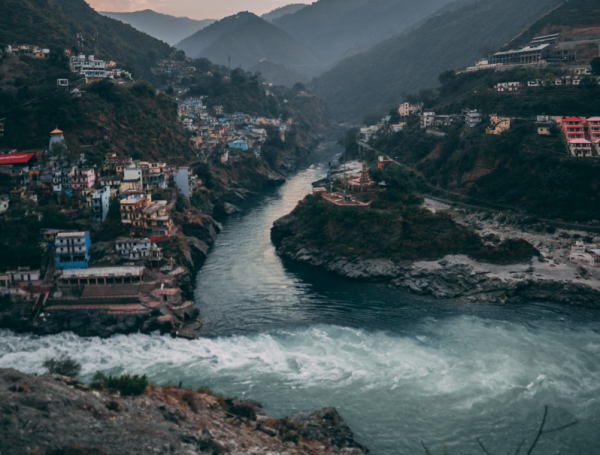Volume Two
The sun’s warmth was kept at bay by a slight yet no ticeable breeze, typical for southern Chile. As we meandered along the trail towards our destination, our group of students accordioned along the path, some peeling off to take photos, inspect flowers, typ ical for geography students in the field. After a quick km hike, we turned the corner and saw the end of the trail, the confluence of the Baker and Neff rivers.
The larger of the two rivers, the Rio Baker shines a brilliant hue of blue, characteristic of glacier drain ages. The other is much more sediment laden and thus gives off a less enchanting brownish-gray color. The power of the surging rivers is ampli fied by a small rapid just upstream, converting the force of the Rio Baker into an audible rumble.
Much like the confluence described, the process of conducting research combines diverse ideas and data into a single, cogent story. While trac es of the previous components are traceable in the amalgam, they present a new story, more com pelling and powerful than otherwise possible.
In this, the second volume of Confluence, we rec ognize the work of students who have creatively braided experiences, data, and artistry into a larg er understanding of the space around us. Recently graduated MS student Carolina Neyra explores the how the processes of colonialism and capitalism shape the experiences of her peers in a transcript se lected from an interview video she filmed. Master’s student Cody Clemens describes the efforts to reha bilitate the Colorado River Delta in his map atlas.
MS student, Dharitri Pradhan’s piece, “The Fate of the Ogallala” gives an overview of the exploitation of one of the largest aquifers in North America. Under graduate student Antonio Luna’s article “Monsoon Floods in Pakistan, 2022” describes the catastrophic
flooding that impacted much of Pakistan following unprecedented monsoon rains. The final ecology piece comes from MS student Abbie Culbertson’s atlas which describes the ecological impacts of acid rock drainage in Rocky Mountain National Park.
The collection of more socially-focused arti cles begins with Undergraduate student Shel by Irvin’s article which situates food movements within larger fruit commodity industries. Fol lowing is Undergraduate student Nathan Keffer’s article “Equitability and Cycling in Denver: Cur rent Conditions and Opportunities for Develop ment” looking at bicycle infrastructure in Denver.
Undergraduate student Michelle Lazarz “Talking Trash” unpacks the garbage problem of Denver Met ro. MS student Lauren Thompson’s article “Employ ing Agrovoltaics to Combat Climate Change” speaks to the opportunities and challenges of integrating solar photovoltaic technology with agricultural land use. Finally, Undergraduate student Henry DeAnge lis’s storymap is an interactive online map that helps portray what travelling is like for disabled people.
This collection of brilliant work from students underwent was nominated by faculty and in structors these 11 pieces for publication. Fol lowing the peer-review process of both cur rent and former graduate students, the editorial board proudly accepts this work for publication.
This work represents the creative and incredible scholarship produced by students, mentors, and faculty from the Geography and Environmen tal Science department that spans the confluence of human and physical science. We are pleased to release the second volume of Confluence.
Sincerely,
Jonathan Burton
A special thanks to Dr. Tom Duster and Inaugural Editor Sarah Melotte for their work breaking trail.

